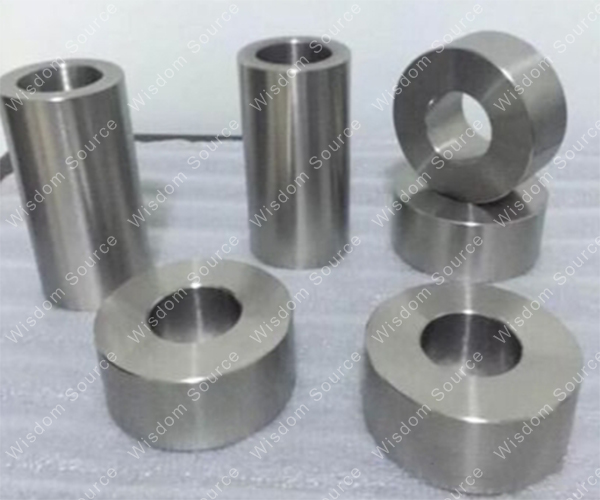Full Analysis Of Non-Destructive Testing Technology Of Titanium And Titanium Alloys
Full Analysis Of Non-Destructive Testing Technology Of Titanium And Titanium Alloys
1. Penetration Testing (PT)
1. Detection Principle
By coating a penetrant containing a dye/fluorescent substance, capillary action is used to penetrate the liquid into the surface opening defect. After removing the excess penetrant, a reducing imaging agent is applied to adsorb the residual liquid at the defect, and finally the morphology of the defect is observed by ultraviolet light (fluorescence method) or white light (coloring method).
2. Core Advantage
1) Wide Applicability: it can detect surface opening defects of non-porous materials such as cracks, pores, folds, etc.
2) Ultra-High Sensitivity: it can identify microscopic cracks with a width of 0.5µm, a depth of 10 µm, and a length of 1mm.
3) Easy To Operate: multi-directional defects in the plane can be detected in a single operation, and the results are intuitive and easy to interpret.
4) Economical And Portable: simple equipment, low cost, suitable for field operations

3. Technical Limitations
1) Only for surface defect detection, the internal structure cannot be detected
2) The ambient temperature is sensitive, and extreme temperatures affect the detection accuracy
3) Strict surface pre-treatment is required, and the cleaning requirements are higher than other methods
2. Ultrasonic Testing (UT)
1. Detection Principle
Using 0.5-25MHz high-frequency sound waves to propagate in the material, the delay, amplitude and waveform characteristics of the reflected wave at the defect are analyzed to locate the defect and evaluate the size.
2. Core Advantage
1) Depth Detection: Can detect titanium alloy work-pieces with a thickness of more than 1 meter
2) High Sensitivity: sensitive to surface defects such as cracks and pores
3) Multi-Dimensional Analysis: defect depth, size and orientation information can be obtained
3. Technical Limitations
1) A couplant (glycerin/water glass) is required to conduct sound waves, and the detection surface must be flat
2) Low sensitivity to tiny inclusions, relying on the experience of technical personnel
3) The results are not visual, and it is difficult to distinguish the defect type
4) Data is difficult to store for a long time, and there are blind spots in the detection of thick-walled work-pieces.
3. Ray Inspection (RT)
1. Detection Principle
Using the attenuation effect that occurs when X/γ rays penetrate the material, the density difference is recorded through film or digital detectors to form a two-dimensional image of internal defects.
2. Core Advantage
1) Internal Exploration: it can accurately detect volumetric internal defects such as pores and slag.
2) Intuitive Recording: the test results can be stored permanently for easy traceability and analysis
3) Material Universality: suitable for testing of various metal and non-metallic materials
3. Technical Limitations
1) There is a risk of ionizing radiation and strict protective measures are required
2) Large investment in equipment, high cost of mobile gamma source detection
3) The detection rate of crack defects is significantly affected by directivity
4) Thick work-pieces require a high-energy ray source, and the detection sensitivity decreases with thickness.
4. Eddy Current Eetection (ET)
1. Detection Principle
The alternating magnetic field induces eddy currents in the conductive material, and the eddy current disturbance signal caused by the defect is used to determine the defect characteristics.
2. Core Advantage
1) Non-contact inspection, surface/near-surface defects can be detected without couplant, suitable for coated work-pieces
2) Real-time display of test results, support automated scanning
3. Technical Limitations
1) Only conductive materials, invalid for non-metals
2) Limited detection depth (usually <5mm)
3) Standard test block calibration is required, and the parameter settings are complex
By combining a variety of testing methods, the all-round quality evaluation of titanium alloy parts can be realized. In practical applications, it is necessary to flexibly choose according to the work-piece structure, defect type and inspection environment, and use cross-verification strategies to improve inspection reliability when necessary.
